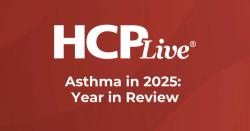
OR WAIT null SECS
Investigators Await Clinical Trials of New Vaccines for Asthma
The new kinoid vaccine has shown positive results in mice with human proteins, and the France-based team remain optimistic of human trials in the future.
Investigators in France await clinical trial data for the use of IL-4/IL-14 kinoids—a class of promising therapeutic vaccines desisnged to induce neutralizing IL-4 and IL-13 antibodies and treat asthma, among other allergic diseases.
Investigators, led by Laurent L. Reber, PhD, noted the prevalence of asthma in the modern world, which affects 300 million people globally.
According to the study, about half of all patients who struggle with asthma also suffer from type 2 inflammation, characterized by elevated levels of IgE and type 2 cytokines such as IL-4 and IL-13.
Reber and colleagues’ research was not unfounded. Several recombinant monoclonal antibodies had been approved for the treatment of asthma, all of which targeted IgE, type 2 cytokines and their receptors.
Additionally, French biotech Neovacs studied an IL-4-Keyhole Limpet Hemocyanin (KLH) conjugate vaccine in mice as early as 2007. The findings of that study demonstrated active immunization against IL-4 in mice could partially reduce IgE levels and eosinophilia, with minor effects on mucus production.
Further confirmation of the Neovacs findings were made evident when human trials began, resulting in superior efficacy of mAb targeting in both interleukin pathways.
Despite these various successes in the past, Reber and colleagues noted that the use of mAbs had been limited by high cost and the need for lifelong injections, and that the need for improvements on long-term solutions was evident.
The investigators began the development of the kinoid vaccines in 2017 and was a collaborative effort between the French National Institute of Health and Medical Research (Inserm), the Institut Pasteur and Neovacs.
By targeting both IL-4 and IL-14, the team rationalized that the kinoid vaccines would help mitigate key asthma features in patients and ensure long-term protection.
Much like the 2007 study, the efficacy of the vaccines were first demonstrated on mice.
Researchers found that mice injected with the kinoids in emulsion with a squalene oil-in-water emulsion adjuvant (SWE) developed a neutralizing antibodies response. This was observed in 60% of the mice 1 year after primary immunization.
Most of the antibodies produced were of the IgG1 isotype.
With the success of the initial mice trials, Reber and colleagues decided to produce an anti-human IL-4/IL-13 vaccine, using a novel mouse strain expressing human IL-4, IL-14 and IL-4Ra in place of mouse proteins.
As a result, the “humanized mice” showed an efficient neutralizing response against both interleukin groups as well as a reduction in circulating IgE. The desensitizing of the cells was also made apparent with the reduction of IgE on the surface of blood basophils and skin mast cells.
The investigators believed they had demonstrated a promising effect of the kinoid vaccine for the treatment of asthma.
“Although the strength and duration of the antibody response induced by the human IL- 4/IL-13 kinoids will need to be determined in clinical trials, they may be similar to the responses observed with the IFN-a kinoids,” the team wrote.
Additionally, Reber and colleagues hope that the vaccine could have beneficial effect in other allergic disorders, including atopic dermatitis, chronic rhinosinusitis with nasal polyps, food allergy, and eosinophilic esophagitis.
The study, “Recent Patents in Allergy and Immunology: Development and preclinical evaluation of a vaccine targeting IL-4 and IL-13 for the treatment of allergic asthma,” was published online in the European Journal of Allergy and Clinical Immunology.


